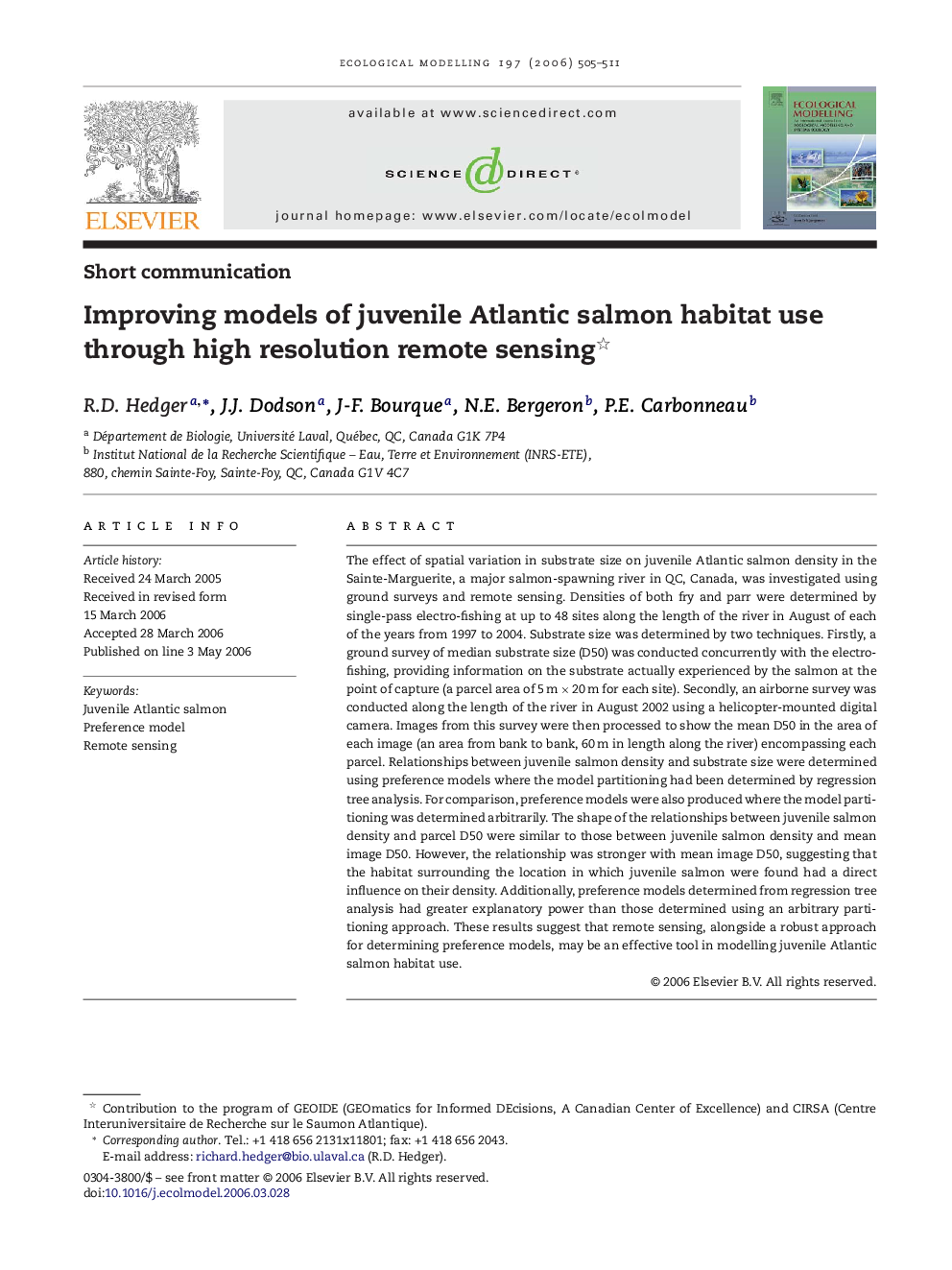| کد مقاله | کد نشریه | سال انتشار | مقاله انگلیسی | نسخه تمام متن |
|---|---|---|---|---|
| 4379228 | 1617559 | 2006 | 7 صفحه PDF | دانلود رایگان |

The effect of spatial variation in substrate size on juvenile Atlantic salmon density in the Sainte-Marguerite, a major salmon-spawning river in QC, Canada, was investigated using ground surveys and remote sensing. Densities of both fry and parr were determined by single-pass electro-fishing at up to 48 sites along the length of the river in August of each of the years from 1997 to 2004. Substrate size was determined by two techniques. Firstly, a ground survey of median substrate size (D50) was conducted concurrently with the electro-fishing, providing information on the substrate actually experienced by the salmon at the point of capture (a parcel area of 5 m × 20 m for each site). Secondly, an airborne survey was conducted along the length of the river in August 2002 using a helicopter-mounted digital camera. Images from this survey were then processed to show the mean D50 in the area of each image (an area from bank to bank, 60 m in length along the river) encompassing each parcel. Relationships between juvenile salmon density and substrate size were determined using preference models where the model partitioning had been determined by regression tree analysis. For comparison, preference models were also produced where the model partitioning was determined arbitrarily. The shape of the relationships between juvenile salmon density and parcel D50 were similar to those between juvenile salmon density and mean image D50. However, the relationship was stronger with mean image D50, suggesting that the habitat surrounding the location in which juvenile salmon were found had a direct influence on their density. Additionally, preference models determined from regression tree analysis had greater explanatory power than those determined using an arbitrary partitioning approach. These results suggest that remote sensing, alongside a robust approach for determining preference models, may be an effective tool in modelling juvenile Atlantic salmon habitat use.
Journal: Ecological Modelling - Volume 197, Issues 3–4, 25 August 2006, Pages 505–511